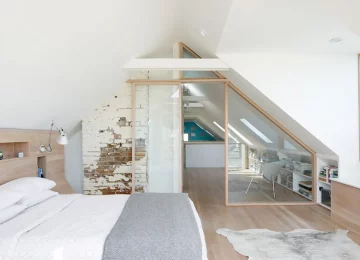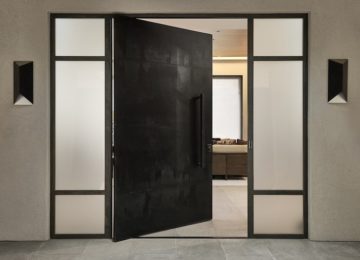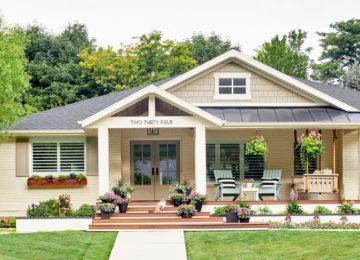As the housing crisis in California continues, more and more people are looking for ways to build accessory dwelling units (ADUs) on their property. After all, an ADU can provide much-needed extra income or housing for aging parents or adult children. But what happens when your homeowners’ association (HOA) gets wind of your plans? Can they really stop you from building an ADU?
HOAs in California
The answer to this question isn’t a simple yes or no. While HOAs do have the power to control what type of development can take place within their community, they are subject to state and local laws. In California, there are a number of laws that protect homeowners’ rights to build ADUs.
For example, Assembly Bill 2215, which was enacted in 2016, prohibits HOAs from unreasonably restricting the ability of homeowners to build ADUs on their property. Additionally, Senate Bill 13 (also known as the Accessory Dwelling Unit bill) was passed in 2017 and made it easier for homeowners to obtain the permits needed to build an ADU. Finally, Assembly Bill 2406, which was enacted in 2018, requires HOAs to allow homeowners to build ADUs of up to 1200 square feet on their property.
Growing Interest in ADUs
An ADU, or accessory dwelling unit, is a small accessory dwelling located on the same property as a larger home. These units are becoming increasingly popular in California, where soaring housing costs and scarce land have created a demand for more affordable housing options. One of the key benefits of ADUs is that they can be used as long-term rentals, which can help property owners to offset the cost of their mortgages.
Additionally, because they are typically located at the rear of properties or on smaller lots that do not currently have dwellings, ADUs often do not require new construction or extensive renovations. As such, they can be a viable and cost-effective option for homeowners in areas where real estate is at a premium. Whether you’re looking for additional rental income or simply hoping to make your property more competitive in today’s challenging housing market, an ADU may be just what you need. But first, you need to understand the building process.
The Building Process
Building an ADU can be a complex and time-consuming process. In order to get started, you will need to consider several key factors, such as local regulations, zoning requirements, and the services offered by your chosen builder. When you work with an experienced ADU builder like Acton ADU, you get to work closely with their team to ensure that your ADU is constructed in a way that is both practical and visually appealing. Their design experts will help you create a customized building plan that fits seamlessly with your existing home.
With their experience and passion for quality craftsmanship, they can ensure that your new ADU will be built to last. Whether you’re looking for something simple and minimalist or an exciting addition to your home’s living space, Acton ADU can help you realize your vision for a beautiful and functional ADU. Visit www.actonadu.com to learn more about their process.
What Restrictions Can an HOA Place on Your ADU Build in California?
A homeowner’s association (HOA) can place a number of restrictions on the construction of your ADU in California. For example, they may determine the minimum and maximum lot size requirements or restrict the materials that are used to construct the ADU. In addition, HOAs may limit the types of activities or behaviors that are allowed on the property, such as noise levels or whether pets are permitted.
However, there are a number of strategies that homeowners can use to get around these restrictions. For example, they can negotiate with their HOA to gain approval for their proposed ADU builds. Alternatively, they may want to consider working with an attorney who specializes in HOA law to appeal any restrictions that have been placed on their property. Ultimately, by being proactive and taking the necessary steps to work with their HOA, homeowners can overcome any challenges that may arise when building an ADU in California.
How to Find Out if Your HOA Will Allow You to Build an ADU on Your Property
The first step in determining whether you can build an ADU on your property is to check with your housing association. HOA regulations vary widely from one area to the next, and it’s important to make sure that your intended location will allow for an ADU before proceeding with any building plans. To find out more about what your HOA allows, visit their website or contact a representative directly. You may also want to consult a real estate agent who is knowledgeable about ADUs, as they can offer insights into what the local zoning laws are and provide a list of contractors who are experienced in building secondary structures like ADUs.
Ultimately, properly researching and planning for an ADU can help ensure that you have the flexibility and resources you need to create a space that meets your needs and suits your property’s landscape. So if you’re truly serious about finding out if an ADU is a viable option, it’s best to get started as soon as possible.
Tips for Working with Your HOA to Get ADU Approval
When planning to build an ADU in Santa Clara County, CA, it’s important to work closely with your HOA to ensure that all of the necessary approvals are obtained. Here are a few tips to help you navigate this process effectively and efficiently:
- Communicate openly and honestly with your HOA. The more open and clear you can be about your plans, the easier it will be for them to understand what you are trying to accomplish. This will make them more likely to give their support and approval.
- Do thorough research on all relevant planning and zoning regulations. Your HOA will most likely have some guidelines or restrictions that need to be followed in order for your project to get approved, so it’s vital that you are familiar with these rules before starting the process. You should also consult with a professional architect or contractor who can offer expert guidance on designing an ADU that meets all requirements.
- Make sure that your expectations are realistic from the start. It’s important not to get overly invested in any particular design or idea before securing approval from your HOA, as this may detract from being able to work closely and collaboratively with them during the application process. By approaching things with an open mind, you’re much more likely to find common ground and build a strong relationship with your association moving forward.
Final Thoughts
While your HOA may not be thrilled about your plans to build an ADU, they likely won’t be able to stop you from doing so if you follow all the proper legal channels. In California, there are a number of laws that protect homeowners’ rights to build ADUs. So long as you stay within the parameters set by these laws, you should be able to move forward with your plans without any trouble from your HOA.










